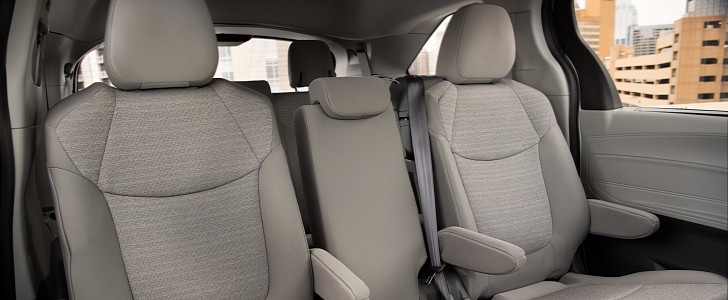In comparison to previous generations of vehicles, modern rides are considerably safer than their progenitors largely because of advances in technologies aimed at ensuring the well-being of drivers and passengers.
While the testers who evaluate safety features generally focus on bells and whistles like driver-assist technology and front-seat safety, studies of safety take a “back seat” for the most part.
But no more as Consumer Reports has placed a premium on mapping the conditions faced by the occupants of the back row seating offered by various manufacturers with a look at rear-seat safety scores.
The studies focus on six categories, including seat fitment, ease of booster seat use, alerts for rear occupant alerts, rear seat belt messaging, the availability of rear compartment head restraints, and advanced rear restraints.
As a part of their look back, Consumer Reports found that the safety of back-seat passengers may not be a priority for most manufacturers.
The study says that rear seat occupants - from infants and teens to adults and ride-sharing passengers - face different conditions than front seat users.
For example, the Consumer Reports findings indicate that just 40 percent of new vehicles have seat-belt pretensioners and load-limiters for the rear seats, and only 30 percent of those vehicles have seat-belt messaging aimed at encouraging rear passengers to strap in. In addition, slightly over 25 percent of those vehicles tested include side airbags designed to protect rear-seat passengers in the event of “T-Bone” crashes.
The study evaluated a total of 35 new vehicles for the 2021 and 2022 model years and rated from best to worst all those vehicles for overall rear seat safety. While none of the vehicles analyzed earned a perfect score, the Toyota Sienna minivan headed the list of 2021 offerings with a score of 69 and earned “good” or “very good” scores in all six categories. Sadly, the 2021 Genesis G80 came in at 24.
"Our analysis shows that many automakers don't put the same safety features in the rear that they do in the front," said Automotive Safety Engineer for Consumer Reports, Dr. Emily Thomas.
Just 10 vehicles made for 2022 were evaluated, and the Nissan Pathfinder lead the list with a score of 66. The Volkswagen Taos brought up the rear with a score of 31.
In order for 2021 were: the Toyota Sienna at 69, the Nissan Rogue at 66, the Ford Bronco Sport at 61, the Cadillac Escalade at 61 and the Ford F-150 XLT at 61.
"The message from our new rear-seat safety testing is not that vehicles with lower scores are unsafe, but that they do not offer the same comparative margin of protection as those vehicles that earn higher marks," Thomas said.
But no more as Consumer Reports has placed a premium on mapping the conditions faced by the occupants of the back row seating offered by various manufacturers with a look at rear-seat safety scores.
The studies focus on six categories, including seat fitment, ease of booster seat use, alerts for rear occupant alerts, rear seat belt messaging, the availability of rear compartment head restraints, and advanced rear restraints.
As a part of their look back, Consumer Reports found that the safety of back-seat passengers may not be a priority for most manufacturers.
The study says that rear seat occupants - from infants and teens to adults and ride-sharing passengers - face different conditions than front seat users.
For example, the Consumer Reports findings indicate that just 40 percent of new vehicles have seat-belt pretensioners and load-limiters for the rear seats, and only 30 percent of those vehicles have seat-belt messaging aimed at encouraging rear passengers to strap in. In addition, slightly over 25 percent of those vehicles tested include side airbags designed to protect rear-seat passengers in the event of “T-Bone” crashes.
The study evaluated a total of 35 new vehicles for the 2021 and 2022 model years and rated from best to worst all those vehicles for overall rear seat safety. While none of the vehicles analyzed earned a perfect score, the Toyota Sienna minivan headed the list of 2021 offerings with a score of 69 and earned “good” or “very good” scores in all six categories. Sadly, the 2021 Genesis G80 came in at 24.
"Our analysis shows that many automakers don't put the same safety features in the rear that they do in the front," said Automotive Safety Engineer for Consumer Reports, Dr. Emily Thomas.
Just 10 vehicles made for 2022 were evaluated, and the Nissan Pathfinder lead the list with a score of 66. The Volkswagen Taos brought up the rear with a score of 31.
In order for 2021 were: the Toyota Sienna at 69, the Nissan Rogue at 66, the Ford Bronco Sport at 61, the Cadillac Escalade at 61 and the Ford F-150 XLT at 61.
"The message from our new rear-seat safety testing is not that vehicles with lower scores are unsafe, but that they do not offer the same comparative margin of protection as those vehicles that earn higher marks," Thomas said.































